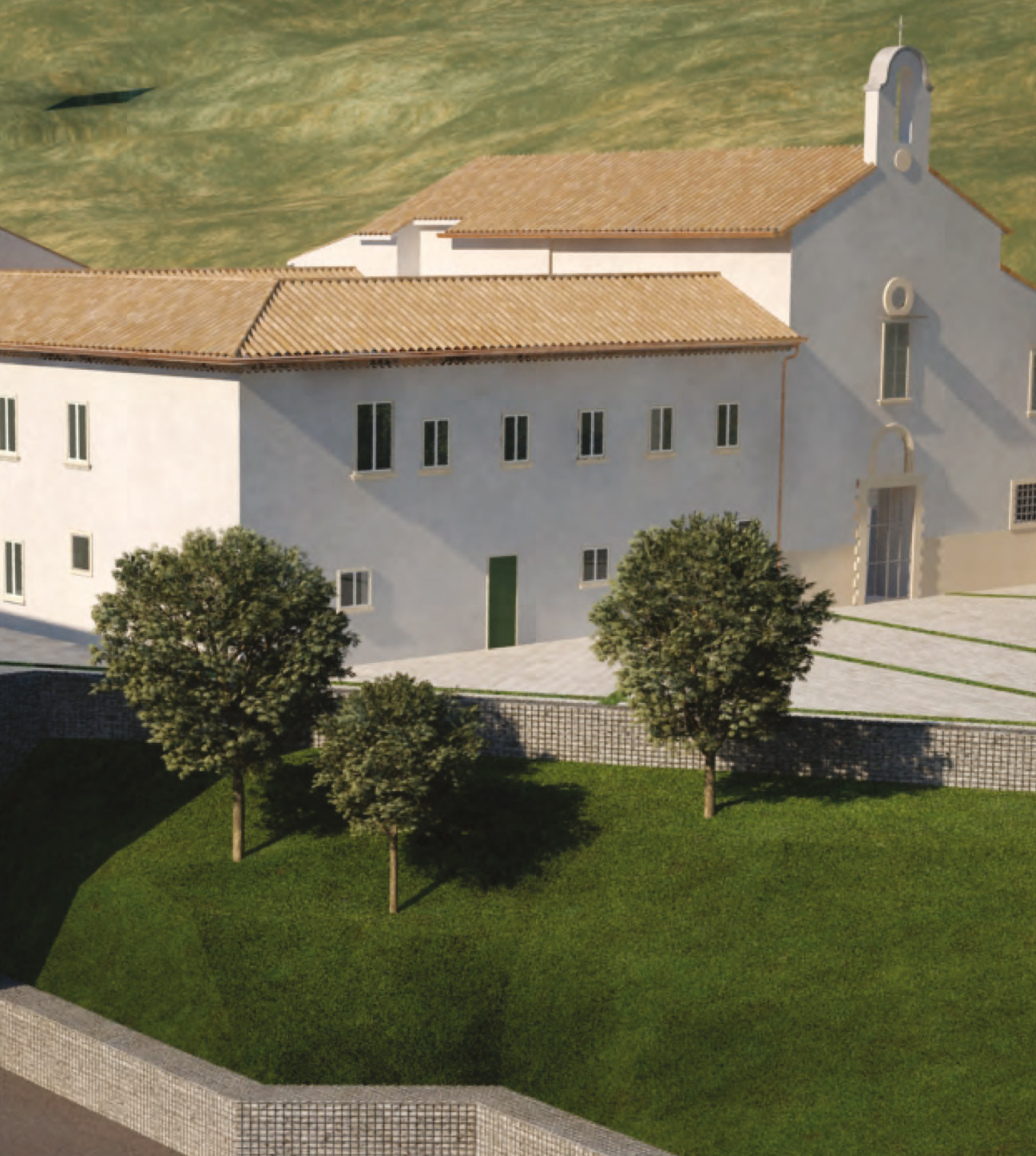Restoration and Recovery
The company has developed numerous rehabilitation and restoration projects for the preservation of the existing building stock. In particular, he has acquired considerable knowledge in the restoration and functional recovery of ancient buildings of historical and architectural value.



Project Info
Municipality of Montesarchio: experimental restoration of a building complex in Cappuccini locality
Cost: €6,430,536.43
Years: 2012/2019
Construction management, CSE
The proposal for Montesarchio is a residential project that has followed the path of the ethnographic project from the beginning: a complex work that combines social, cultural and technical objectives, all of which are complementary and intended to have a positive impact on the ecology and quality of life of the individual and the community.

An urban intervention in which we have “thought globally but local” and which represents an Italian approach to ecologically oriented design, less radical than the European solutions we know from books and trade journals, but more interesting for that very reason.

The buildings and outdoor spaces are designed to form a unified organism. Open spaces, modulated in different contexts-public, semi-public and private-become the center of relationships in the neighborhood.

The network of connections between the different areas, characterized by different materials and tree species, is conceived as a narrative path in which landscape and architecture become episodes, moments of narration and recomposition of the history and identity of this corner of the Campania region.
The area in front of the residential buildings was designed as a true covered plaza, an extension of outdoor domestic life and an element of fusion between old and new residential buildings. The square is paved around the buildings and is made of poor materials typical of the local building tradition, reflecting the shapes and colors of the rural province.

At the entrance to the Capuchin Monastery property is a beautiful driveway that ends in an open square. From here, a path leads up the hill through an arched passageway to the back of the monastery to the fountain and park outside.
The entire square will be paved with limestone, interrupted by narrow green paths, with two different orientations, one
according to the front of the monastery, the other according to the axis of the natural slope.

The building is compact, C-shaped, and consists of two blocks perpendicular to a larger body that has been restored in the past. The project focuses on the smaller wings (which of different sizes, referred to as Block A and Block B), trying to reorganize spaces and openings, but within the limits imposed by a load-bearing masonry structure.
The only new body added is the greenhouse, a mediating space between indoors and outdoors conceived as a small square – inserted in a cavity already present in the original building.
On the side facing the residential buildings, there will be a series of terraces accessed by rammed-earth paths. The terraces, supported by natural wickerwork or gabions made of local limestone, will have natural wood fencing. Small plants, lawns or flowers can be planted in these areas, which will be assigned to the families occupying the apartments.
Outdoor activities and maintenance efforts in these areas will strengthen residents’ attachment to the areas outside the buildings, which will thus be perceived as a natural extension of their homes.


Project Info
Restoration and redesign of Angelini Palace, historic open spaces, facades
Client: Municipality of Buonalbergo
Cost: €2,925,431.91
Year of completion: 2013
Executive design
The project is of priority importance in the context of the project proposal of the Municipality of Buonalbergo according to the requirements of the RDP Campania 2007/2013, Measure 322 (rural village renewal), in order to prevent the depopulation of small communities through measures that promote the attractiveness of places, improve the living conditions of residents and increase the level of employment. Palazzo Angelini is a key building in the urban landscape of Buonalbergo, which is a remarkable rural hamlet that is well preserved but inadequately developed.

From the structural point of view, the intervention strategy is to improve the mechanical properties of masonry by reducing the static load, installing compatible elements to eliminate local weaknesses and reinforce part of the resistant elements. From the restoration point of view, the main objective is to preserve the overall authenticity of the building in its historical and formal values


Project Info
Palazzo Stabile – New institutional headquarters for the Municipality of Capaccio Paestum
Client: Municipality of Capaccio Paestum
Cost: €1,813,819.50
Year of completion: 2021
Executive design
Today Palazzo Stabile, which is mostly empty, is only partially used as a private residence. In order to preserve the authentic values of the building, it was decided to use one part of it as the new institutional headquarters of the municipality, while another part will host exhibitions, cultural events and art galleries. This change of use will not compromise the typological, formal and cultural characteristics of the building while providing a useful service to the community. The building is subject to landscape restrictions, and restoration, earthquake retrofitting, and adaptation to fire safety standards will be carried out.

The project includes all necessary measures to ensure the functionality of the building without compromising its historical and artistic value. In accordance with the recommendations of the NOR. MA.L., the interior and exterior walls will be cleaned, consolidated and protected. To meet the new function, different categories of work will be carried out, such as demolition of materials incompatible with the historical value of the building, restoration of interior plaster, replacement or restoration of interior and exterior wooden fixtures, replacement of iron or wooden fixtures in an advanced state of decay with new wooden fixtures of the same shape and type as the existing ones; structural consolidation work, replacement of wooden floors in an advanced state of decay, and construction of a new wooden roof.


Project Info
Preservation, restoration and reconstruction of Marchitto Palace
Client: Municipality of Puglianello
Cost: €3,889,426.19
Years: 2009/2016
Final and executive design, construction management, CSP, CSE
The project involves the restoration, consolidation and redevelopment of the entire complex to turn it into an accommodation facility. The vertical and horizontal structures were consolidated and adapted to current seismic risk protection standards, the floors were reinforced, the roof was completely rebuilt with a glulam structure, and the old masonry was restored and reinstated.

Project Info
Restoration of the Poor Clare Monastery and outdoor areas to create a center of higher education and excellence
Client: Municipality of Montesarchio
Cost: €1,251,778.06
Years:2003/2017
Final and executive design, construction management, CSP, CSE




